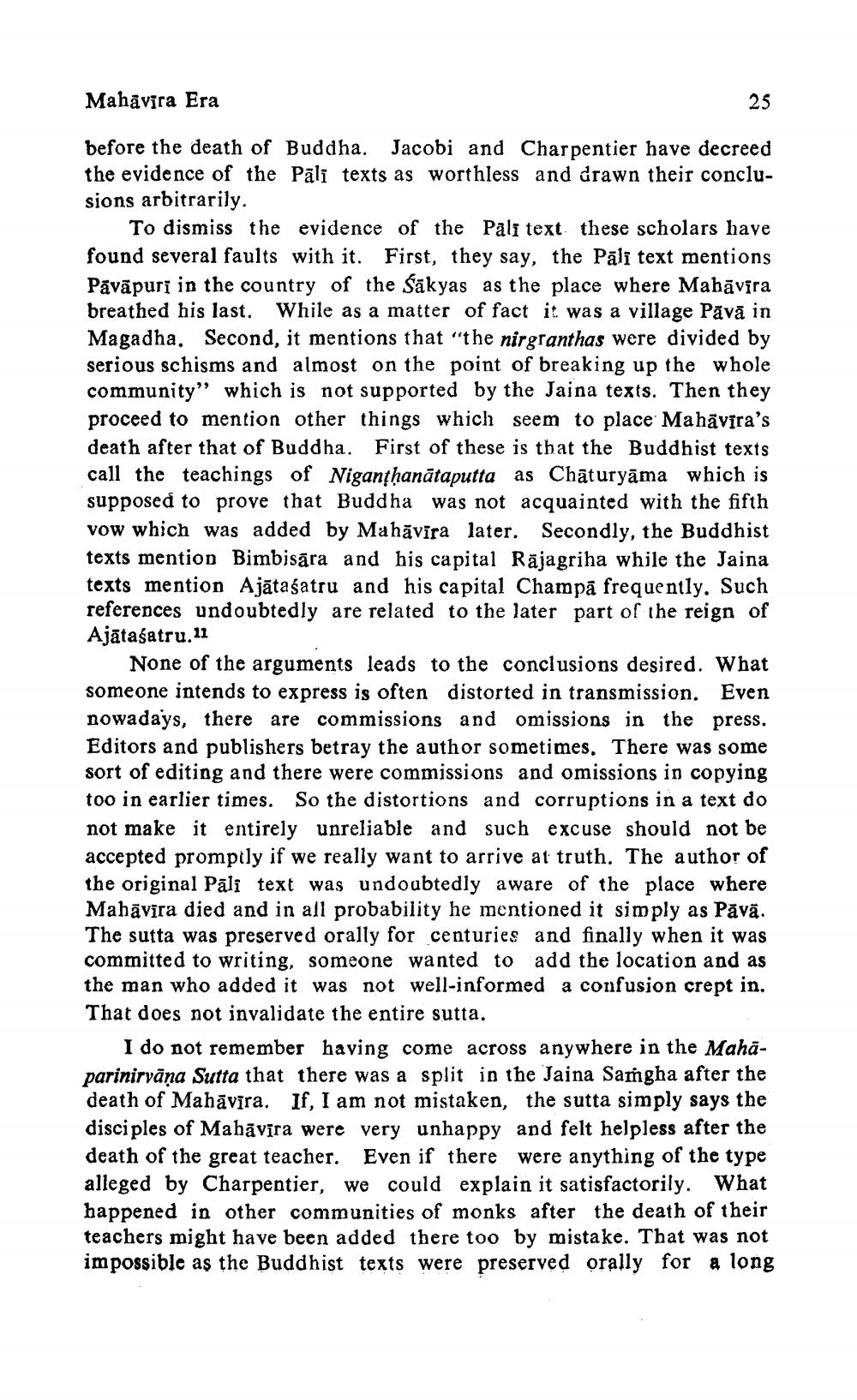________________
Mahavira Era
before the death of Buddha. Jacobi and Charpentier have decreed the evidence of the Pali texts as worthless and drawn their conclusions arbitrarily.
25
To dismiss the evidence of the Pali text these scholars have found several faults with it. First, they say, the Pali text mentions Pāvāpuri in the country of the Sakyas as the place where Mahāvīra breathed his last. While as a matter of fact it was a village Pāvā in Magadha. Second, it mentions that "the nirgranthas were divided by serious schisms and almost on the point of breaking up the whole community" which is not supported by the Jaina texts. Then they proceed to mention other things which seem to place Mahavira's death after that of Buddha. First of these is that the Buddhist texts call the teachings of Niganțḥanātaputta as Chaturyāma which is supposed to prove that Buddha was not acquainted with the fifth vow which was added by Mahāvīra later. Secondly, the Buddhist texts mention Bimbisara and his capital Rajagriha while the Jaina texts mention Ajataśatru and his capital Champa frequently. Such references undoubtedly are related to the later part of the reign of Ajātaśatru.11
None of the arguments leads to the conclusions desired. What someone intends to express is often distorted in transmission. Even nowadays, there are commissions and omissions in the press. Editors and publishers betray the author sometimes. There was some sort of editing and there were commissions and omissions in copying too in earlier times. So the distortions and corruptions in a text do not make it entirely unreliable and such excuse should not be accepted promptly if we really want to arrive at truth. The author of the original Pāli text was undoubtedly aware of the place where Mahavira died and in all probability he mentioned it simply as Pāvā. The sutta was preserved orally for centuries and finally when it was committed to writing, someone wanted to add the location and as the man who added it was not well-informed a confusion crept in. That does not invalidate the entire sutta.
I do not remember having come across anywhere in the Mahaparinirvana Sutta that there was a split in the Jaina Samgha after the death of Mahāvīra. If, I am not mistaken, the sutta simply says the disciples of Mahāvīra were very unhappy and felt helpless after the death of the great teacher. Even if there were anything of the type alleged by Charpentier, we could explain it satisfactorily. What happened in other communities of monks after the death of their teachers might have been added there too by mistake. That was not impossible as the Buddhist texts were preserved orally for a long




